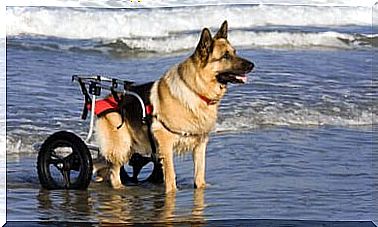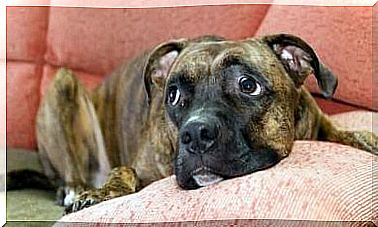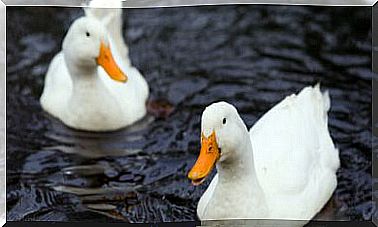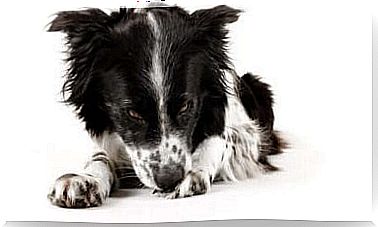Cynophobia, The Phobia Of Dogs

Although for most of us dogs are our best friends, diagnoses of cynophobia have grown by the day.
There are certain people who have a phobia of dogs, and this is a difficult reality that must be overcome daily. Next, we’ll learn more about cynophobia, its symptoms, causes, and treatment.
What is cynophobia?
From a medical point of view, cynophobia is defined as follows: “a persistent, abnormal and unjustified fear of dogs or the rabies they could transmit” . Thus, a person suffering from cynophobia feels real panic in the presence of a dog.
In fact, in more serious cases, phobia symptoms may appear just by imagining themselves in a context that involves sharing the same environment as a dog. Furthermore, dreams can also contribute to the appearance of the characteristic signs of such intense fear.
How to differentiate a phobia from a “common” fear?
“ Phobia” and “fear” are different concepts, that is, they are expressed in different ways. Fear is a feeling inherent to our human condition and is also present in other animals. It consists of a defense mechanism that plays an essential role for our survival.
This is the fear that allows us to be alert, recognize and act in situations of stress or danger. Of course, it’s a very useful reaction.
In the case of phobia, it is characterized by a feeling of fear disproportionate to everyday situations, harmless or even unreal. While dogs can actually hurt a person, out of self-defense or lack of training, cynophobia is clearly a fear that goes beyond that possibility.

When we have fear at healthy levels, we can use our rational ability to analyze the context in which we find ourselves. Then, we can decide to adapt and overcome this fear, or actually act to escape or face the situation.
However, if we have a phobia, we often lose this voluntary control over our own fear. A rather unpleasant situation.
So the feeling overcomes the rational ability and imagination often worsens the symptoms, as to be no rational explanation for this fear.
Here is a practical example to better understand the difference: a person can be afraid and keep their distance from a large and powerful dog or one that is angry and this, beyond any doubt, is an absolutely healthy preventive care.
But someone who develops a phobia of dogs will have a real panic when they see, for example, a small dog walking peacefully on the pavement in front. And it doesn’t matter if the dog is totally harmless and friendly: the phobia does not allow for the rational diagnosis that would lead to calm.
Symptoms of Cynophobia
The symptoms of cynophobia are similar to those of any other phobia, but these develop in relation to dogs.
In the beginning, all fear generates the feeling of discomfort, but in a phobia the suffering increases, because it is fueled by the irrational character of this excessive fear. This psychological discomfort leads to the appearance of the following physical signs:
- excessive sweating
- Tachycardia
- Feeling of hate, anger or excessive anger
- tremors
- Change in breathing rhythm or breathing difficulties
- Nausea and eventual vomiting
- Stomach pain (which can lead to diarrhea)

Possible Causes of Cynophobia
The first attempt to explain cynophobia relates to the increase in diagnosed cases with dog attacks that become news in many countries.
On the other hand, researchers have pointed to traumatic childhood experiences as the main cause of most phobias. In the case of cynophobia, most interviewed patients revealed that they had been exposed to some negative situation with dogs in the first 10 years of life.
Furthermore, it has also been found that phobias can be “transmitted” by parents or people who are very influential in a child’s early education. Therefore, we must be very aware when introducing our children to dogs.
Cynophobia: is it possible to prevent it?
Establishing prevention for a phobia is as or more complicated than pointing to a specific cause for its development. Currently, psychologists and psychopedagogists specialized in cynophobia refer to early and gradual exposure as the best form of prevention.
As children tend to be more susceptible to developing phobias, we should avoid exposing them to traumatic situations, as well as avoiding transmitting our fears to them.
Of course, it is important to teach them to prevent and adopt safety measures, but prioritizing rational methods with the help of positive reinforcement.









